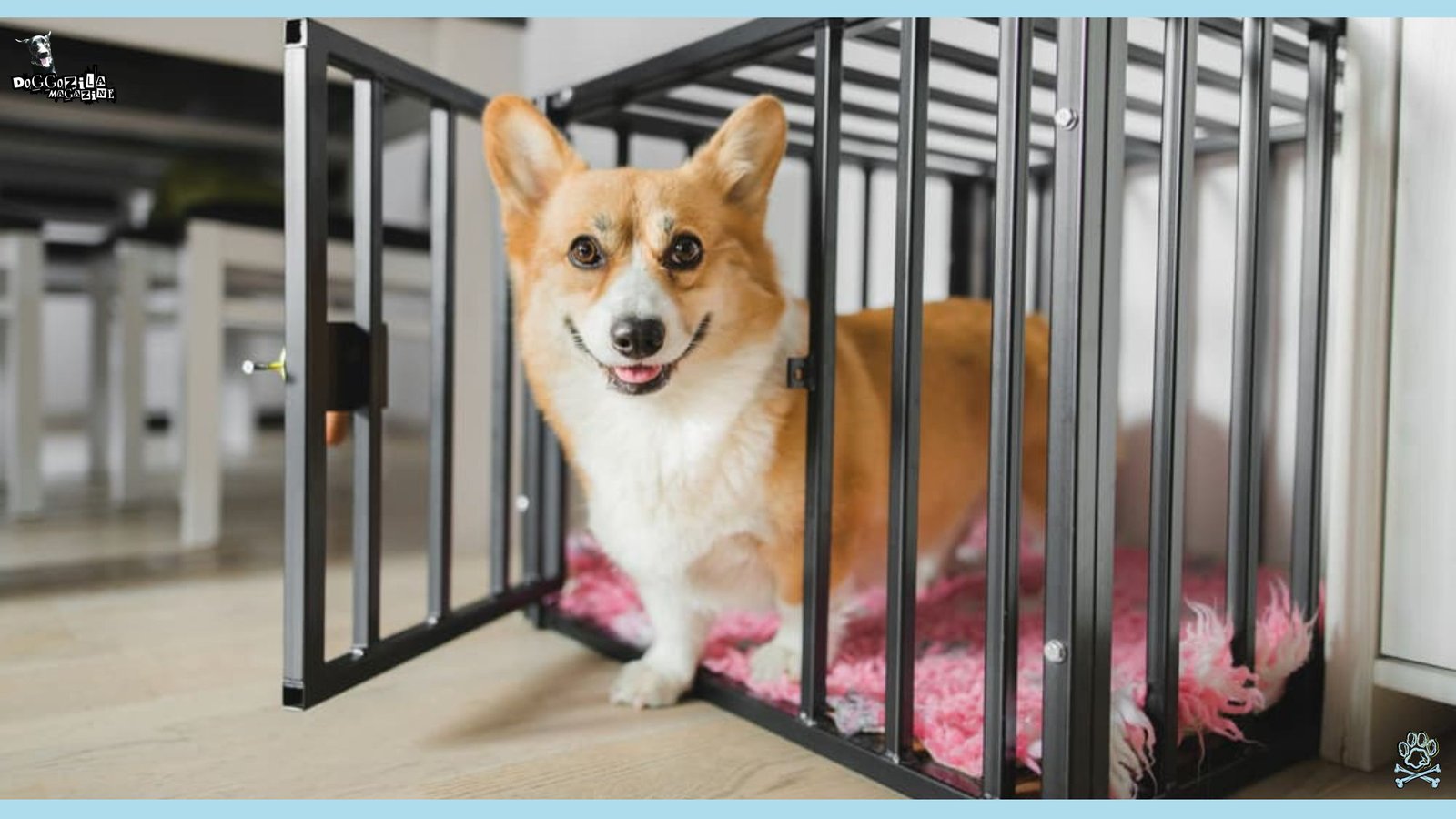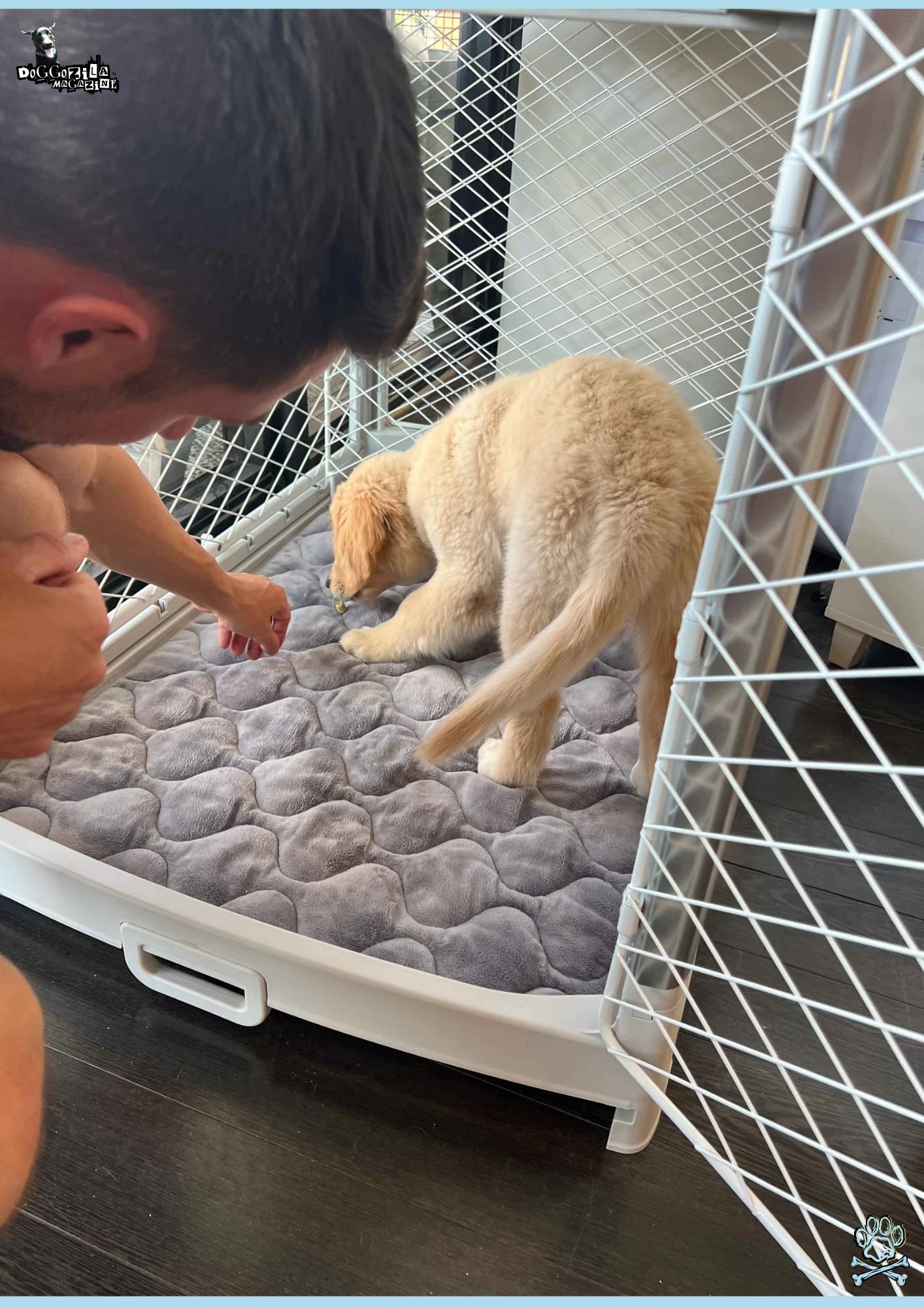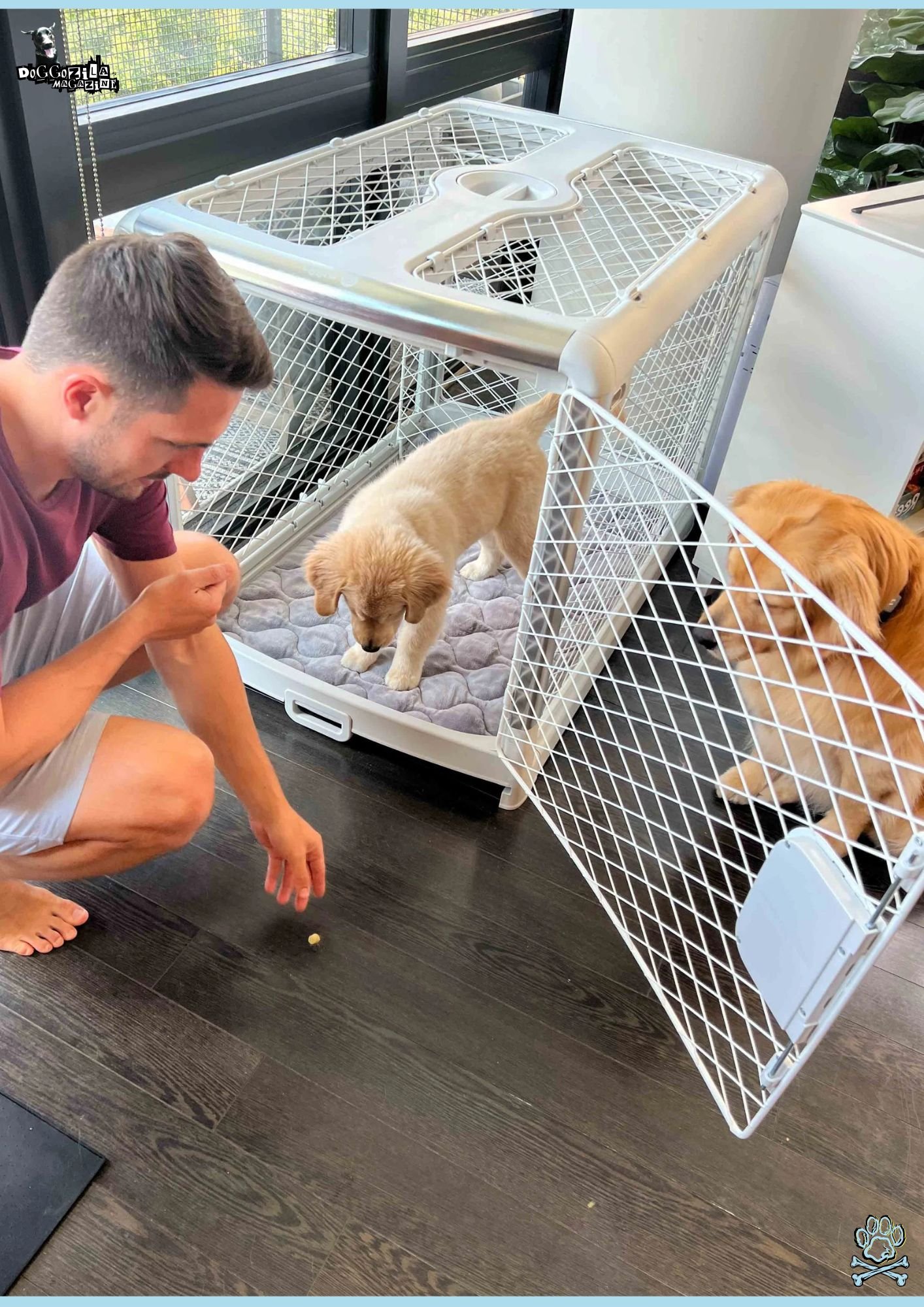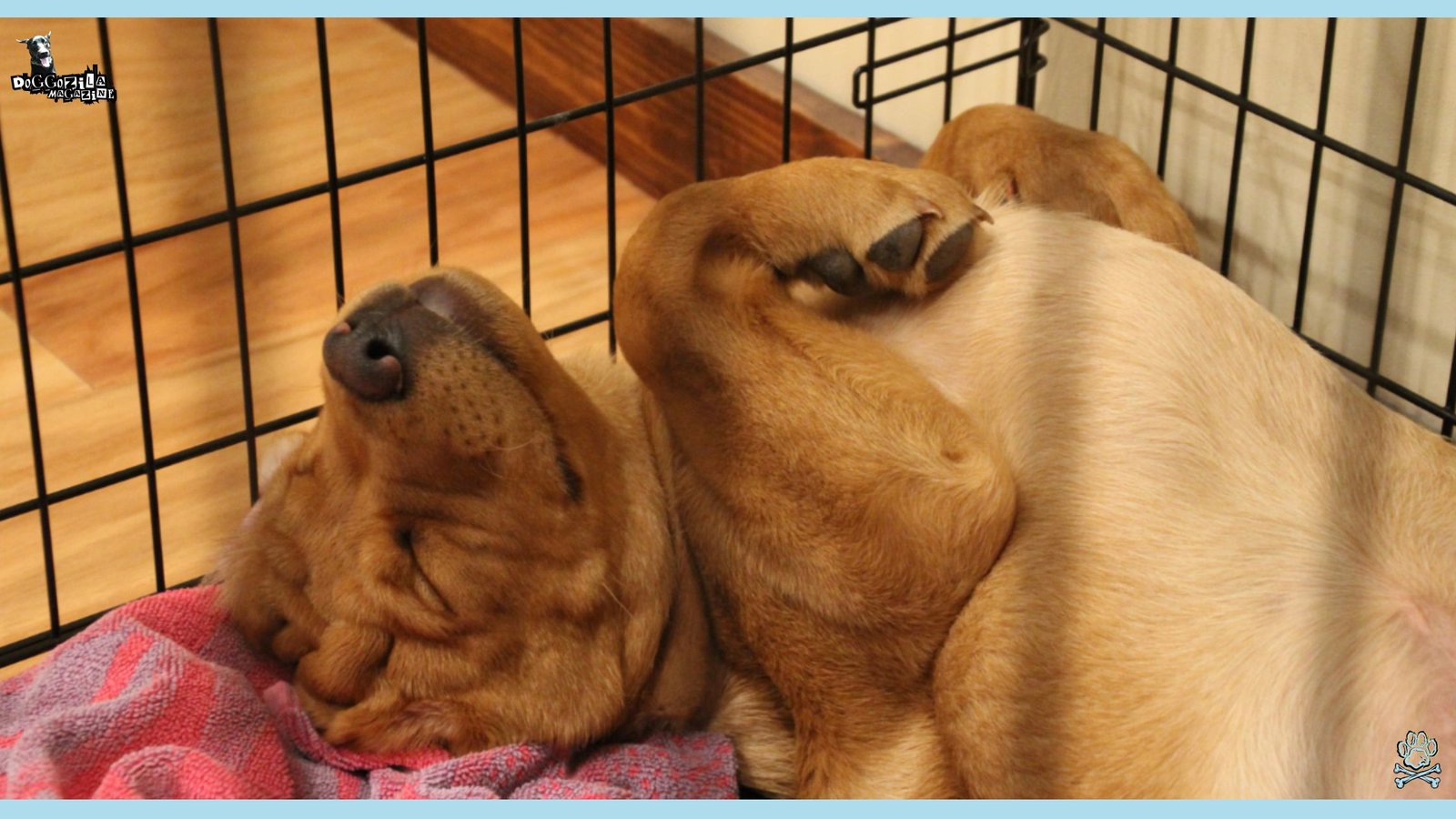Did you know that over 80 percent of dogs feel less anxious when crate training is done correctly? Many pet owners struggle with myths about crates or choose the wrong setup, which adds stress for both dog and human. This article will help you understand why to crate train your dog and what does crate training really means. It will show you how it benefits your dog’s well-being can help you create a safe, comforting space that supports good habits and a calmer home life.
Unlock the secret to reducing your dog’s anxiety, simplifying travel, and accelerating house training, all by mastering one simple technique.

Key Takeaways
| Point | Details |
| Crate Training Philosophy | Crate training fosters a safe, den-like environment for dogs, promoting psychological security rather than mere confinement. |
| Debunking Crate Myths | Key misconceptions include viewing crate training as cruel and believing only puppies require it, all ages can benefit when done properly. |
| Selecting the Right Crate | Choose a crate based on your dog’s size and personality, considering factors like portability, durability, and style. |
| Crate Training Process | Gradual introduction and positive reinforcement are essential, avoid punishment and excessive confinement to ensure comfort and safety. |

DEFINING TRAINING AND ITS MISCONCEPTIONS: WHY TO CRATE TRAIN YOUR DOG?
To crate train your dog represents a nuanced approach to dog management that goes far beyond simple confinement. Crate training is fundamentally about creating a safe, personal space for your dog that serves multiple functional purposes. According to research from Wikipedia, this process teaches dogs to accept a designated area as their secure retreat, mimicking a den-like environment.
Common Misconceptions About Crate Training Debunked
Many dog owners harbor misunderstandings about crate training that can prevent them from leveraging its benefits.
Let’s unpack some prevalent myths:
- Myth: Crate Training is Cruel: In reality, when introduced positively, crates become comfortable sanctuaries
- Myth: Only Puppies Need Crate Training: Dogs of all ages can benefit from proper crate introduction
- Myth: All Crates Are Identical: Choosing inappropriate sizes or styles can completely undermine the training process
The key is understanding that to crate train your dog isn’t about punishment or restriction. It’s about providing a psychological safe haven where your dog feels protected and calm. As research from Ted & Co suggests, when implemented correctly, crates can significantly reduce stress during potentially challenging situations like veterinary visits or travel.
Successfully to crate train your dog can transforms the crate from a simple container into a personal sanctuary. Think of it like a dog’s personal bedroom, a place of comfort, security, and retreat. By approaching crate training with patience, positive reinforcement, and understanding, you’ll help your dog develop a healthy relationship with their special space.
🔑 What To Remember: Crate training is not about cruel confinement, but it’s about creating a psychological safe haven for your dog that mimics a den, providing comfort and security for dogs of all ages when introduced correctly.

CRATE TYPES AND CHOOSING THE RIGHT MODEL
Selecting the perfect crate isn’t a one-size-fits-all decision. According to AKC research, dogs require crates that provide comfort, safety, and appropriate space. Crate types range from practical to stylish, each serving unique purposes for different dog personalities and owner lifestyles.
Major Crate Varieties
Four primary crate types dominate the market, each with distinct advantages:
- Plastic Crates: Durable, airline-approved, easy to clean
- Metal Wire Crates: Sturdy, excellent ventilation, highly visible
- Wooden Crates: Attractive, blends with furniture
- Soft-Sided Crates: Lightweight, supremely portable
The critical factor is sizing. According to Great Pet Care, your crate should allow your dog to stand, turn, and lie down comfortably, with a few extra inches for movement.
Pro tip: For puppies, consider crates with adjustable dividers that can expand as they grow. Your lifestyle and dog’s temperament should guide your selection.
Active travelers might prioritize airline-compliant models, while home-based owners could focus on aesthetics and durability. A chewer might need a more robust wire crate, whereas a calm companion could thrive in a furniture-style wooden model. Remember, the right crate isn’t just a container, but it’s your dog’s personal sanctuary.
Comparison Of The Main Dog Crate Types And Their Key Features

| Crate Type | Pros | Best For |
| Plastic Crate | Durable – Easy to clean – Airline-approved | Travel – Short-term use |
| Metal Wire Crate | Sturdy – Excellent ventilation – Highly visible | Home use – Chewers |
| Wooden Crate | Stylish – Blends with furniture | Home décor – Calm, non-chewers |
| Soft-Sided Crate | Lightweight – Very portable | Travel – mall or calm dogs |
🔑 What To Remember: The right crate depends on your dog’s size and personality, with key types including durable plastic for travel, well-ventilated metal wire for home use, stylish wooden for décor, and lightweight soft-sided for portability.

KEY BENEFITS FOR DOGS AND OWNERS FROM THE CRATE TRAINING
Crate training isn’t just a management technique, but it’s a comprehensive approach to supporting your dog’s psychological and physical well-being. According to AKC research, this practice offers profound advantages for both canine companions and their human families.
Benefits for Dogs
Dogs experience multiple advantages through thoughtful crate training:
- Psychological Security: Creates a personal safe space
- Housebreaking Support: Leverages natural den-dwelling instincts
- Travel Safety: Provides secure transportation environment
- Stress Reduction: Offers a calming retreat during anxious moments
For senior dogs or those with health challenges, crates become more than just a space, they’re a sanctuary. Petful research highlights that properly implemented crate train process can prevent destructive behaviors while offering a cozy, controlled environment.
Advantages for Dog Owners
Owners aren’t left out of the benefits equation. To crate train your dog you need to introduce structure, reduce home damage, and provide peace of mind. It simplifies travel, veterinary visits, and emergency situations by giving your dog a consistent, comfortable reference point. Want to learn more about creating healthy habits for your dog? Crate training is an excellent starting point.
Ultimately, crate training is about building trust, understanding, and mutual respect between you and your furry companion. When approached with patience and positive reinforcement, it transforms from a training technique into a lifelong bonding experience.
🔑 What To Remember: Crate training offers profound benefits for dogs, including psychological security, housebreaking support, and a safe space for travel, while giving owners peace of mind and a tool for managing behavior.

STEP-BY-STEP CRATE TRAINING PROCESS
The crate train process for your dog is a gradual and patient that requires understanding and consistent positive reinforcement. Your goal is transforming the crate from an unknown space into a welcoming personal sanctuary for your dog. Learn more about puppy training fundamentals to complement this approach.
Preparation and Initial Introduction
Start by selecting the right crate, one that allows your dog to stand, turn, and lie down comfortably. According to Cornell College of Veterinary Medicine, the crate size is critical, especially for puppies.
Key preparation steps include:
- Place the crate in a high-traffic, familiar area
- Make the interior inviting with soft bedding
- Leave the crate door open initially
- Use treats to create positive associations
Gradual Acclimation Techniques for Crate Training
Consistent, short training sessions work best. Begin with brief 5-10 minute periods, gradually increasing duration. A helpful guideline is the age-plus-one rule, a puppy’s maximum crate time equals their age in months plus one hour.
Always provide:
- Frequent bathroom breaks
- Regular exercise before crate time
- Positive reinforcement with treats
- Calm, patient guidance
Remember, to crate train your dog isn’t about punishment, but it’s about creating a safe, comfortable space. Some dogs adapt quickly, while others need more time and gentle encouragement. Watch your dog’s body language and adjust your approach accordingly.
🔑 What To Remember: Successful crate training is a gradual process that starts with making the crate inviting and using positive reinforcement with treats during short, initial sessions, never using it as punishment.

HOW TO AVOID THE CRATE TRAINING COMMON MISTAKES?
Crate training seems straightforward, but many dog owners unintentionally sabotage their efforts through common missteps. According to Good Paws research, understanding these pitfalls is crucial for successful training.
Top Crate Training Mistakes to Sidestep
The most prevalent errors can derail your crate training journey:
- Punishment Zone: Never use the crate as a disciplinary tool
- Excessive Confinement: Avoid leaving dogs crated for extended periods
- Rushed Process: Gradually introduce the crate, don’t force quick adaptation
- Inconsistent Routine: Maintain a steady, predictable training approach
Strategic Mistake Prevention When Crate Training Your Dog
How to Train a Dream Dog highlights that mistake prevention requires understanding your dog’s unique needs.
What Are The Key Strategies?
- Select the correct crate size
- Use positive reinforcement consistently
- Monitor your dog’s comfort and stress levels
- Create a welcoming, comfortable crate environment
Remember, understanding dog training fundamentals can dramatically improve your success. Patience, observation, and gentle guidance are your best tools in creating a positive crate training experience. Each dog is different, so remain flexible and attentive to your companion’s individual responses and comfort level.
🔑 What To Remember: Avoid common crate training mistakes like using the crate for punishment, confining your dog for excessive periods, rushing the introduction, or being inconsistent with your routine.

GIVE YOUR DOG A TRUE HOME WITH EXPERT CRATE TRAINING HELP
Do you ever worry that crate training feels confusing or overwhelming? Maybe you’ve heard myths about confinement being cruel, or perhaps you want to avoid mistakes that make your dog anxious instead of happy. The journey to providing a stress-free, safe haven for your furry friend begins with smart, supportive guidance, and the right tools for your dog’s needs.
Discover More With Doggozila Magazine

Turn your knowledge into action right now with Doggozila.com. Discover in-depth advice that inspires confidence, shop trusted products that support every step of your training, and join a community of dog owners striving for healthier, happier pets.
Don’t just read about creating the perfect crate sanctuary, start building it today by visiting Doggozila: Your Complete Dog Care Resource and access even more puppy crate training tips and healthy habit guides. Your dog deserves the comfort and confidence that only proper crate training can bring.
🔑 What To Remember: Overcoming the confusion of crate training requires seeking out smart guidance and the right tools to build a true, stress-free sanctuary for your dog.

FREQUENTLY ASKED QUESTIONS
🔑 What To Remember: Crate training is a method of teaching your dog to accept a crate as a safe, den-like personal space, which is beneficial for security, housebreaking, and reducing stress.
Top 5 Recommended Articles to Continue Training Your Dog
You can find more in-depth guides and trusted product recommendations for puppy crate training and developing healthy habits from dedicated dog care resources.
- Puppy Crate Training: Teach Your Dog the Safe Place
- How To Train Your Dog To Drop It? Step By Step Guide
- How To Train Your Dog In 5 Easy Steps!
- How To Train Your Dog For Healthy Habits?
- Virtual Training Room for Online Dog Training
Final Thoughts
Ultimately, crate training is an act of compassion, not confinement. By providing a den-like sanctuary, you are honoring your dog’s natural instincts and giving them a powerful tool to manage stress and feel secure in a human world. This personal haven becomes a consistent, safe space amidst the chaos of daily life, benefiting their emotional well-being for years to come.
Remember that the success of this journey hinges on your approach. Patience, consistency, and positive reinforcement are the cornerstones of transforming a simple crate into a beloved retreat. Rushing the process or using the crate as punishment undermines its very purpose. Your understanding and gentle guidance are what build the trust that makes the crate a true home within your home.
Embrace crate training not as a task to be completed, but as an ongoing investment in your dog’s happiness and your mutual bond. It’s a practice that fosters peace of mind, simplifies daily routines, and builds a foundation of trust and security.

When implemented with love and knowledge, the crate becomes more than a tool, it becomes a symbol of safety and a testament to the caring relationship you share with your canine companion.









